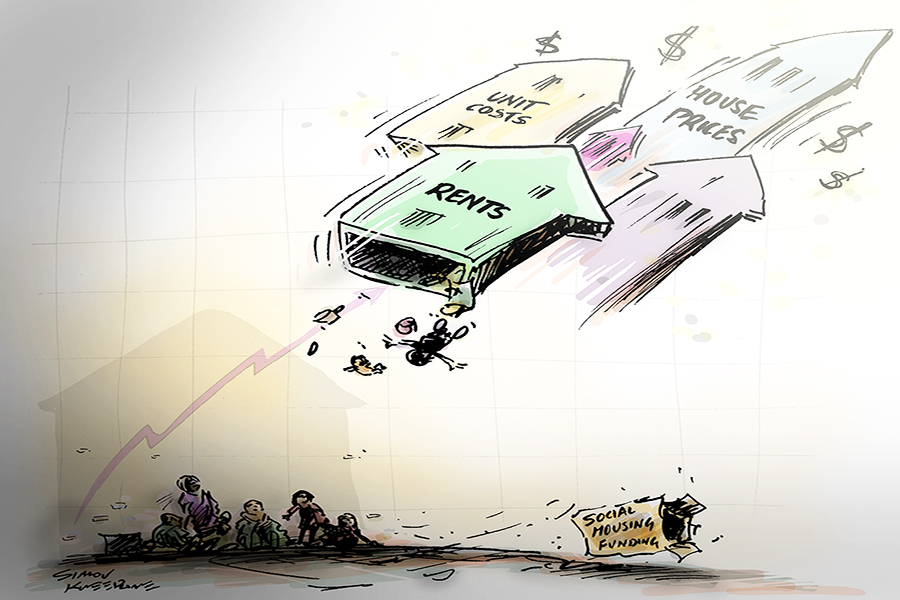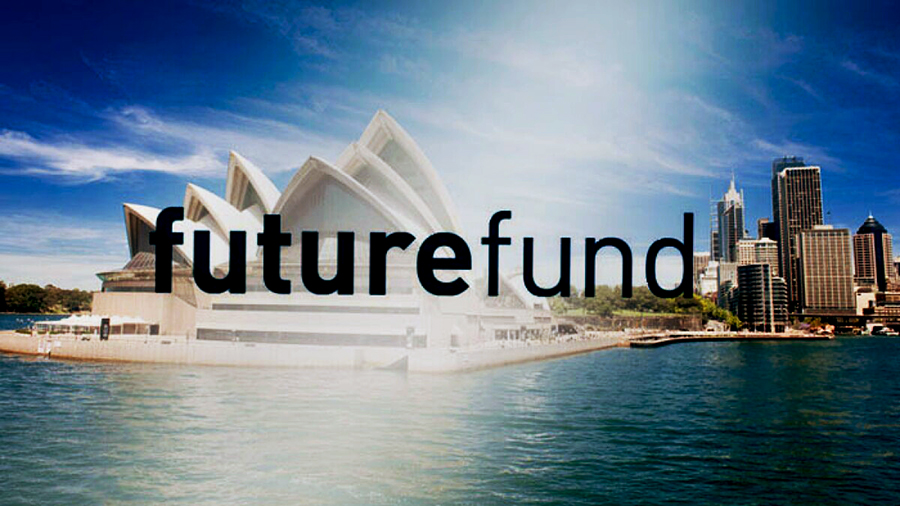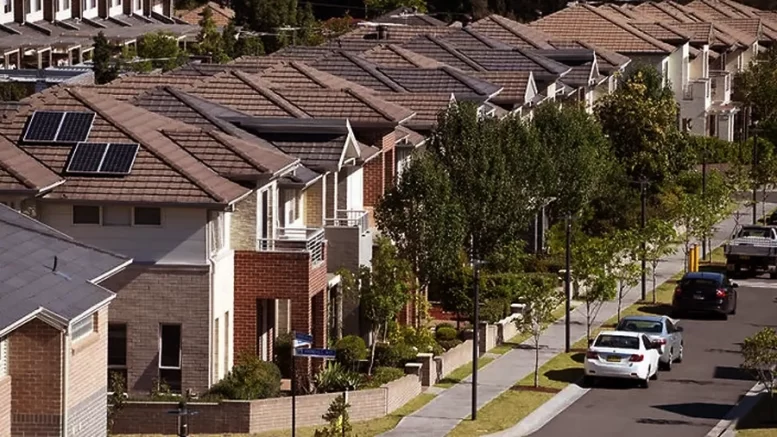Contributed by Joe Montero
There’s no to ways to look at it, the Albanese government has had no other choice but to offer more than what it had offered in Mays’ budget to extend social housing. It has not only been about the Greens holding out for more in the senate. A steep rise in the cost having a roof over one’s head has become a huge issue with an electorate facing difficulty as the cost of living overall continues to rise.
Under these circumstances, the cost of housing has the potential of being a make or break for any government. The May budget’s provision on this score was criticised as inadequate by organisations dealing with those falling through the holes, for not being nearly ambitious enough and that it would not start until 2026. It said it would do little to make a difference.

Cartoon by Simon Kneebone
Anthony Albanese government had no other choice but to offer more and did so on Saturday. The initial offer of $10 billion or $500 million a year over a decade, was added to by a once off top up of $575 new funding for the states, with $610m for New South Wales will, $496 million for Victoria, and $398 million for Queensland. $209 million for Western Australia, and $135 million for South Australia with the rest divided between Tasmania, the Northern Territory. The Australian Capital Territory, who will receive a minimum $50 million.
A further $200 million will be allocated to repair, maintain, and improve housing in remote Frist Nations communities.
The original promise was supposed to build 30,000 new homes in the first 5 years of the program. This number was always questionable and has now been downgraded to 20,000. It still seems a lot with the promised outlay. This has inevitably led to suspicion that a significant part of new builds will be sold in the private market and that there be far less going into social housing than the impression given.
Aware of this the potential fallout, Anthony Albanese has countered with a promise this isn’t going to happen. “we’re not going to have public housing built and then flogged off,” he said. time will tell whether the government is going to honour this.
Another problem is the question mark over trusting the Housing Australia Future Fund (also known as the Haff). It will be managed as a subsidiary of the Future Fund, which the previous Morrison government was able to misuse for other purposes. What if such misuse is repeated in the future? What protection is there to ensure this doesn’t happen?
Albanese did announce that 4,000 of these homes will be allocated to women with children fleeing domestic violence and older women at risk of homelessness.

Is this enough? No. It’s not only the most vulnerable that are at risk. A large part of working Australia is facing paying more than they can afford and lacks the security of guarantee future housing. In the face of the scale of the problem, the Greens make a good point, when they say that 700,000 new affordable and secure homes are necessary to meet the need of today.
Despite its inadequacy, the new policy remains a step in the right direction. If it can help legitimise the need for more affordable housing and government intervention to bring it about, it will have achieved something that can be built on. Australia can then move past cosmetic changes, towards making a real difference.
The single biggest and continuing weakness is that policy still assumes a housing shortage is the fundamental problem. The argument goes this way. Putting more housing into the market will lower the price and make housing more affordable. The answer to this is that Australia has been going through a housing boom for years and this effect hasn’t had this effect.
Tens of thousands of homes remain unoccupied in each of the major capital cities. The housing shortage is not absolute. It is relative. This means the housing stock is often there, but it’s not available to those who need it. money that could have been used for affordable housing has been squandered by throwing it at developers to build more for the private sector.
Measures are needed to release more of the existing housing stock, and the way to do this is to make it costly for muti property owners to keep them empty. One way would be to impose a fine for properties left unoccupied for too long. Critics of negative gearing have been saying for years that this encourages withdrawing of properties from the rental market. Negative gearing should be phased out.
Imposing maximum rents is also important. Releasing more existing properties into the rental market combined with imposing rent controls would do a great deal to lower the market cost of housing.
Investing in the existing stock of public housing to bring it up to scratch and building more public housing on existing public land would help. This means reversing the ongoing reduction of public housing. The tendency to increase other forms of affordable housing at the expense of public housing is not a solution.
Australia must insist on no less. Affordable housing is a human right we are all entitled to.


The Government minist6ers are in bed with the devalopers